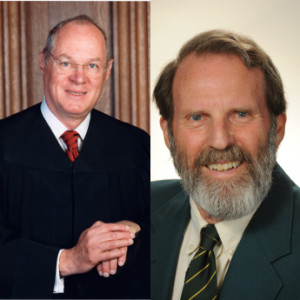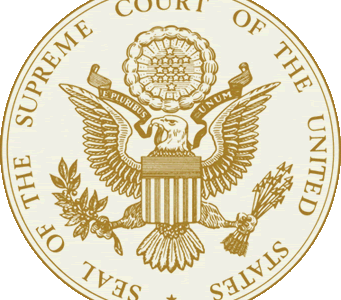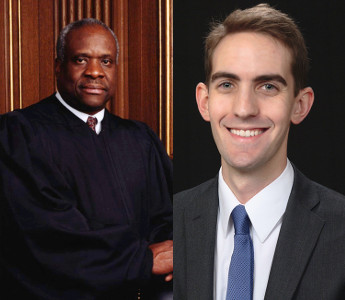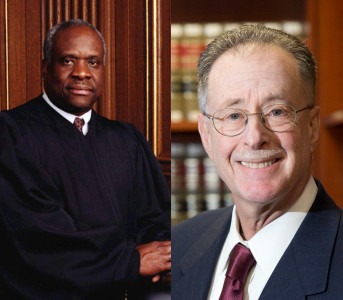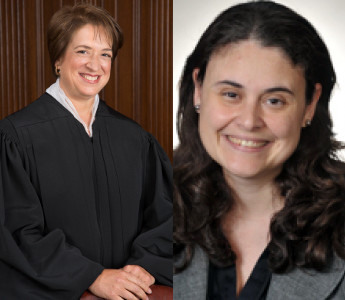Fisher v. University of Texas, 579 U.S. ___ (2016) (Kennedy, J.).
Response by Alan Morrison
Geo. Wash. L. Rev. On the Docket (Oct. Term 2015)
Slip Opinion | N.Y. Times | SCOTUSblog
An Affirmative Decision the Second Time Around
The key sentence in the opinion of Justice Anthony Kennedy for the four-Justice majority in Fisher v. University of Texas1 opens Part III of the opinion: “The University’s system is sui generis.”2 Moreover, because of a number of factors discussed below, it is also true that this case, as well as the UT admissions system, is sui generis. In addition, the fate of most forms of affirmative action in higher education are no longer in serious doubt; the cases now pending against Harvard and North Carolina will continue but they seem quite unlikely to end all affirmative action.
The Texas system is unique because no other has a legislative mandate to admit students in the top 10% of their Texas high school class, subject to an overall cap of 75% of the incoming class who can come in via that route. Given the patterns of housing in Texas, in which large numbers of blacks and Hispanics go to schools in which there are very few Caucasian students, the 10% rule assures that there will be significant numbers of black and Hispanic minorities at UT. This program excludes students from schools who, for pedagogical reasons, do not have class ranks, and anyone from out of state. Not to mention that the program does not take into consideration other strengths that most universities would want in their entering classes, such as athletic ability, musical or artistic talent, and many other skills that make for a diverse school. But despite the impact of the 10% rule in admissions to UT, it was never challenged by Abby Fisher.
To round out the class, Texas opted for a system where, in addition to an academic index, it created a personal achievement index, where there were six factors with race as an element within one of those factors. An applicant’s two index scores were placed on a grid and all those students above the cutoff were admitted as a group, with no personal attention to particular applicants at that point. It is clear that, even if Ms. Fisher had achieved a perfect score on the factor that included race, she would not have been admitted because her other scores were too low. Furthermore, although the Court noted the fact that Ms. Fisher had long graduated from another university, it did not rely for its ruling on the questionable nature of any remedy that she might still have in the non-class action case.
There is another aspect of the case that makes it sui generis: the data about the system was only for the first three years of its operation, and it has been in effect for eight years since the suit was first filed. Justice Kennedy also suggested that the University did not have all of the data for those first three years, which his prior 2013 ruling in this case indicated would be needed for a full consideration of the legality of the Texas system. He recognized the possibility of a remand for further factual findings, but concluded that the case had gone on too long and the time had come to reach a conclusion.3 He repeated the statements from his prior Fisher opinion about strict scrutiny and then upheld the Texas system based on this record.4
Justice Samuel Alito wrote a fifty-one-page dissent in which he was joined by Chief Justice John Roberts and Justice Clarence Thomas. Its essence is in the first four pages in which he argues that Texas had not met the tests set forth in the prior opinion in this case, which he and the Chief Justice had joined, and claims that the majority had, in effect, gone back on what had been previously decided. Those truly interested in the question can read both opinions and decide for themselves whether Justice Alito is correct. But no one can overlook the fact that the record in the second case was no different from what it was before. That raises the question of why this decision could not have been issued three years earlier. The answer is quite clear: Justice Antonin Scalia would have voted to block it so that there would have been a 4-4 tie because of the recusal of Justice Elena Kagan. Indeed, there is strong evidence that the prior Fisher opinion was very much a compromise, perhaps issued on the hope that the record would become clearer after a remand.5
Justice Alito had a fallback position: “But if the majority is determined to give UT yet another chance, we should reverse and send the case back to the District Court.”6 There was one small problem with that suggestion: UT had made that proposal to the court of appeals on remand, Fisher had objected, and the court of appeals sided with her. Her resistance, or more precisely that of her lawyers, was understandable because a remand would have meant more discovery, more costs, and more delay, and what they were looking for was a way to win this case—and the others that will follow it—by a quick surgical strike that would make these cases easy and inexpensive to bring and win, otherwise the universities could simply outlast them. Justice Thomas would provide one vote for outlawing all race-based admissions decisions and Justice Scalia would have joined him, but the other votes needed for a majority for a “never” position were lacking, especially that of Justice Kennedy. It seemed to me when the prior decision was issued that only a remand could supply the information that the majority said was needed,7 but the majority opinion did not direct a remand or even strongly hint that one was needed.
Where does this leave affirmative action in university admissions? There was no dissent, other than that of Justice Thomas, as to the statement of principles in the first Fisher decision, as both sides here quoted it as the law. The difference, as is so often the case, is in its application. On that question, it is unclear how Justice Kennedy will view other cases in light of his emphasis on how unique the Texas system is, and on the unique posture of this case as it came back up to the Court. Moreover, there are two other votes that will be added if there is another case. One is that of Justice Kagan, who seems likely to side with other supporters of some forms of affirmative action, and the other is the replacement for Justice Scalia. I leave the speculation on that to others, except to note that the outcome of the presidential election will surely have an impact on who that will be.
Regardless of who the next Justice is, future challenges to affirmative action will be litigated under the rules in Fisher I, which means much more focus on the details on the admissions system and the evidence to support it. That in turn means greater costs and delays and less likelihood that a victory for a plaintiff in one case will be much of a help somewhere else unless the systems are almost identical. Moreover even a loss need not be permanent, as adjustments can be made that may spell the difference between victory and defeat for a university, and make it even more difficult for opponents to secure permanent wins.
On the other hand, quotas are gone and all schools that want to include race as a factor in admissions must do so as part of a “holistic” process, whatever that may mean. There is a small irony that was present in Fisher that shows that, while affirmative action is still permitted, the opponents have made substantial progress in lessening its impact. Fisher’s lawyers pointed out that the UT system had resulted in only a few additional minority students being admitted and so using race was not worth the cost of stigma and denying admission to even a few Caucasians or Asian-Americans excluded by the system. To which UT replied, and Justice Kennedy seemed to agree, because the numbers are modest (although to UT significant), that is a reason to allow us to continue it. I do not know which side has the better of the “so what’s the big deal argument,” but the existence of such an argument demonstrates that the real world impact, for better or for worse, is quite different from what it would have been if Fisher and its predecessors had not reigned in race-based admissions to some degree.
- Fisher v. Univ. of Tex., No. 14-891 (U.S. June 23, 2016).
- Fisher, slip op. at 8.
- Id. at 10.
- Id. at 8.
- Joan Biskupic, Breaking In: The Rise of Sonia Sotomayor and the Politics of Justice 205–10 (2014).
- Fisher, slip op. at 4 (Alito, J., dissenting).
- Alan B. Morrison, U of Texas Won’t Sweat Affirmative Action Ruling, Nat’l L.J., July 22, 2013, at 30-31.
Recommended Citation:
Alan Morrison, Response, Fisher v. University of Texas: An Affirmative Decision the Second Time Around, Geo. Wash. L. Rev. On the Docket (June 27, 2016), http://www.gwlr.org/fisher-v-university-of-texas-an-affirmative-decision-the-second-time-around.

